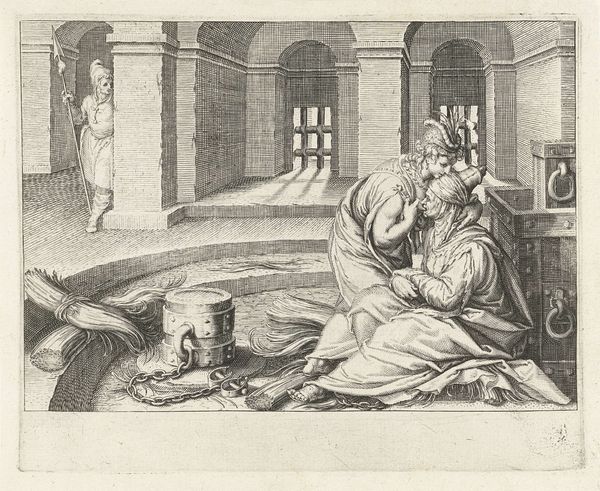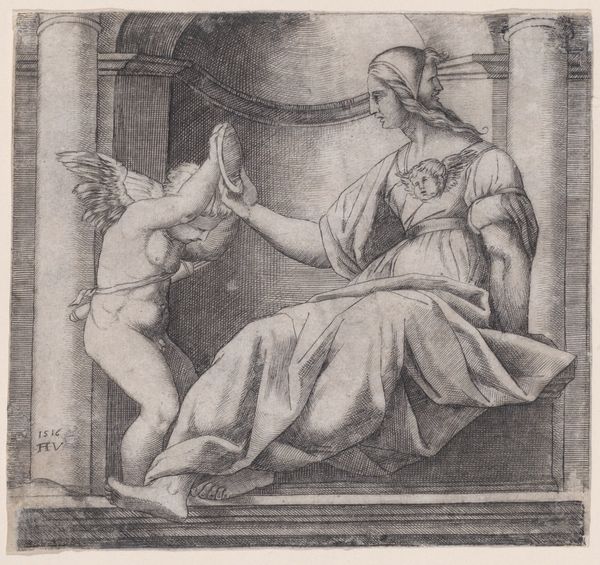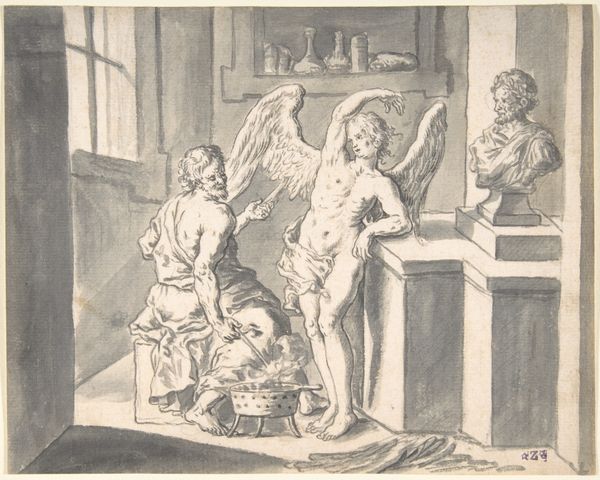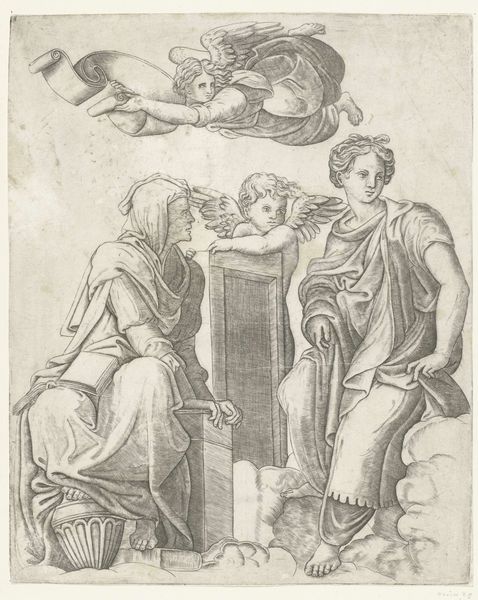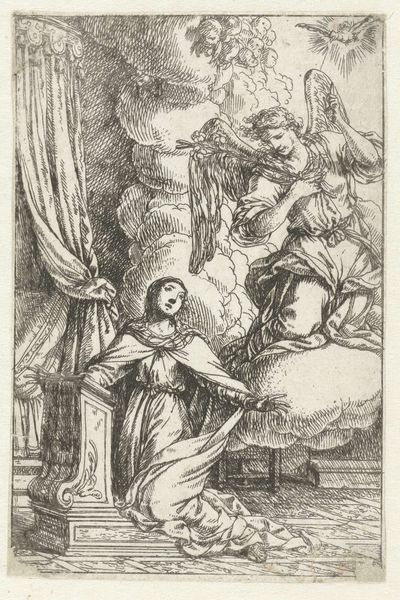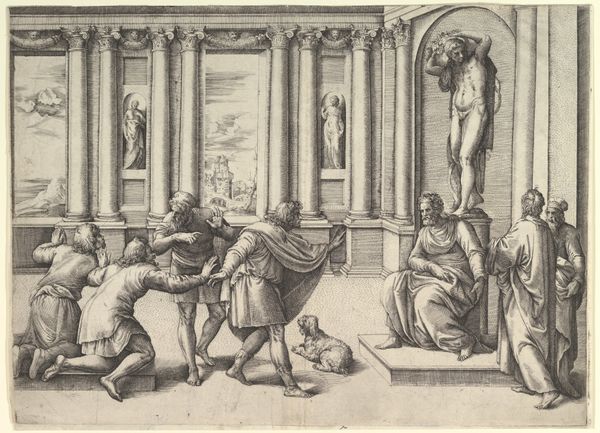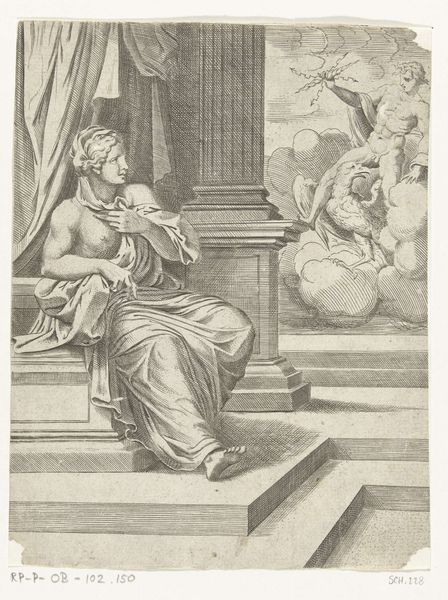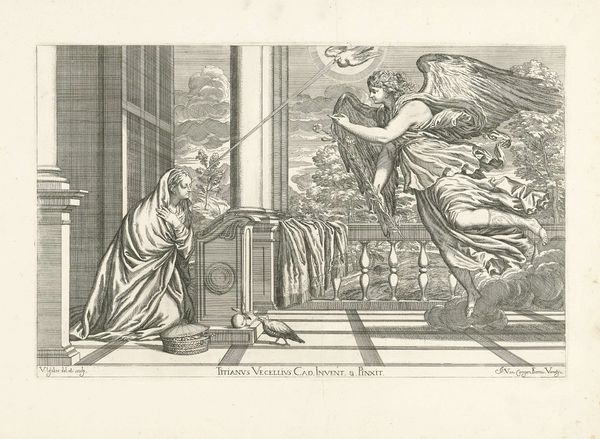
print, engraving
#
narrative-art
# print
#
landscape
#
figuration
#
line
#
history-painting
#
italian-renaissance
#
engraving
Dimensions: height 131 mm, width 178 mm
Copyright: Rijks Museum: Open Domain
Curator: Here we have Sisto Badalocchio's engraving from 1607, "Abimelech ziet Isaak Rebekka liefkozen", a print depicting a scene of intimacy in a classical setting. What are your first impressions? Editor: The stark lines and contrasts give it a furtive quality. There's a powerful architectural frame drawing attention to the embracing couple and, behind them, radiating light that emphasizes a sort of 'caught in the act' atmosphere. How was it made? Curator: Badalocchio employed engraving, carefully incising lines into a metal plate to create the image. Consider the skill needed to produce such fine lines. They convey a range of textures and tones, from the soft folds of the drapery to the radiant light itself. It's a meticulous process demanding precise movements. Editor: Absolutely. And thinking about materiality, it forces one to consider the economics of printmaking in the early 17th century. How would its distribution influence societal perceptions of clandestine encounters such as the one presented here? The narrative itself, drawn from Genesis, surely lends layers of complexity when thinking about labor of production. Curator: Undoubtedly. And further still, let’s delve deeper into the formal structure. The artist deftly positions the figures to draw the eye. Observe how the architecture—those rigorous verticals and horizontals—sets up an intellectual counterpoint to the rounded forms of the figures and the soft embrace. Notice the delicate rendering of fabric contrasting with architectural monumentality. Editor: Good point, it prompts me to consider how such works often blurred the distinction between artisanal production and artistic authorship. Whose vision are we truly seeing? Who profited from the materials and process of its distribution? Curator: A potent question indeed. Perhaps Badalocchio sought to engage the viewer not only with the depicted narrative, but with a play of light and shadow – drawing out moral undertones via the formal arrangements within. The formal construction mirrors an intellectual puzzle. Editor: Perhaps so. The enduring question remains of how artworks such as these shape the stories we tell ourselves, how techniques influence consumption and meaning-making. Food for thought about production versus presentation, in either case. Curator: Yes, contemplating its craftsmanship and formal organization opens compelling avenues for understanding Italian Renaissance narrative and its ongoing effect on contemporary imagery and meaning. Editor: And examining the means of production allows an assessment of art history which incorporates previously-excluded, but equally relevant narratives related to manufacture, context, and cultural consumption.
Comments
No comments
Be the first to comment and join the conversation on the ultimate creative platform.
